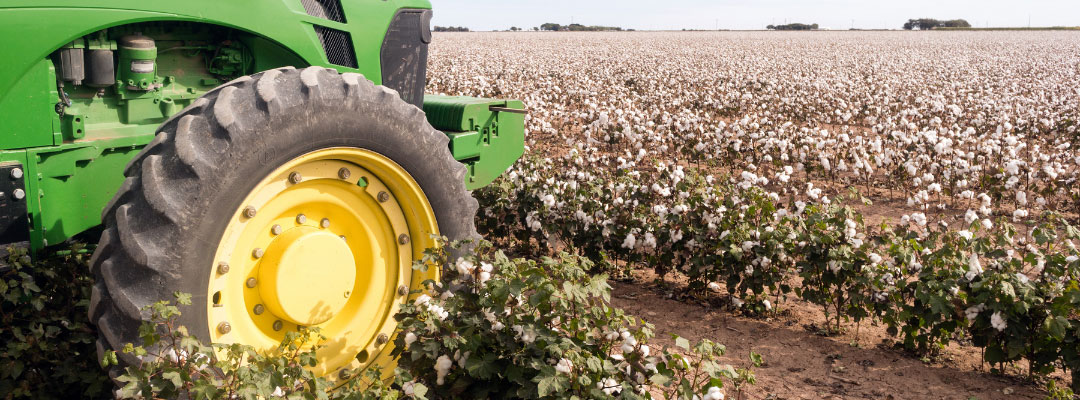The risk in crop production, encompassing yield fluctuations and market price volatility, presents uncertain conditions for agricultural producers. To address and alleviate these uncertainties, the use of crop insurance is a key risk management strategy. The different crop insurance policies available for cotton producers frequently results in uncertainty concerning the variety of policies accessible and the specific regions where these policies are applicable.
For upland cotton, a range of Federal crop insurance plans serves to mitigate the inherent risks associated with cotton production. The Federal Crop Insurance Program (FCIP) for upland cotton encompasses three insurance plans offering farm-level protection against deep losses, which include complete losses. Yield Protection (YP) offers protection against only farm-specific yield losses, while Revenue Protection (RP) is designed to counter revenue losses triggered by variations in futures prices and farm yield. Revenue Protection with Harvest Price Exclusion (RP-HPE) also guards against revenue decline based on futures prices and farm yield but without the benefit of an adjusted revenue guarantee when harvest prices are above projected prices.
In addition to farm-level deep loss insurance, shallow loss programs such as the Supplemental Coverage Option (SCO), Enhanced Coverage Option (ECO), and Stacked Income Protection (STAX) complement the risk management landscape. These policies are called shallow loss programs because none of these policies offer protection for complete losses. SCO and ECO function as add-on insurance products, which require enrollment in an underlying individual or farm-level plan of crop insurance (YP, RP, or RP-HPE) for enrollment. Both of these policies provide area or county-level protection. SCO and ECO follow the coverage of the underlying policy. If a producer chooses Yield Protection, then SCO and ECO cover yield loss. If a producer chooses Revenue Protection, then SCO covers revenue loss. SCO is only available for farms not enrolling in the Agricultural Risk Coverage (ARC) Program. Stacked Income Protection (STAX) functions as an add-on or a standalone product, which can be enrolled with or without the individual or farm-level plan of crop insurance (YP, RP, or RP-HPE). STAX is exclusively accessible to cotton producers whose base acres are not enrolled in the ARC or Price Loss Coverage (PLC) programs. Importantly, STAX may not be purchased with ECO or SCO.
Biram and Connor (2023) provide a comprehensive discussion regarding how to utilize crop insurance programs with an overlap between the deep loss and shallow loss insurance programs. Aside from the deep and shallow loss programs previously mentioned, cotton producers have access to two more crop insurance options: Area Risk Protection Insurance (ARPI, including Area Revenue Protection and Area Yield Protection) and Hurricane Insurance Protection – Wind Index (HIP-WI). ARPI offers coverage based on the overall performance of a designated area, usually a county. ARPI safeguards against revenue or yield loss within a county. Meanwhile, HIP-WI assists by covering a part of the deductible of the primary crop insurance policy when a county or a neighboring one faces sustained hurricane-force winds. HIP-WI’s coverage can be combined with SCO and STAX when the insured acreage is also covered by a companion policy (YP, RP, or RP-HPE). A summary of these insurance programs available for cotton is summarized in Table 1.
Ask your crop insurance agent if these plans of insurance are available in the county in which you produce cotton (see Agent Locator Tool offered by the U.S. Department of Agriculture Risk Management Agency). While insurance policies serve as vital tools in mitigating risks associated with cotton production, their intricacies underline the importance of understanding all the options and developing a comprehensive plan for managing price and yield risks.
Table 1. Individual and area crop insurance products with associated indemnity triggers and status as a standalone product for upland cotton (updated 2/8/2024)
| Product | Type | Trigger | Standalone |
| Deep Loss Programs | |||
| Yield Protection (YP) | Individual | Farm Yield | Yes |
| Revenue Protection (RP) | Individual | Farm Revenue | Yes |
| Revenue Protection, Harvest Price Exclusion (RP-HPE) | Individual | Farm Revenue | Yes |
| Shallow Loss Programs | |||
| Supplemental Coverage Option (SCO) | Area | County Yield or County Revenue | No |
| Enhanced Coverage Option (ECO) | Area | County Yield or County Revenue | No |
| Stacked Income Protection (STAX) | Area | County Revenue | Yes, and can be purchased as an add-on Policy |
| Stacked Income Protection, Harvest Price Exclusion (STAX-HPE) | Area | County Revenue | Yes, and can be purchased as an add-on Policy |
| Additional Programs | |||
| Area Risk Protection (ARP) | Area | County Yield or County Revenue | Yes |
| Hurricane Insurance Protection – Wind Index (HIP-WI) | Area | Hurricane or Tropical Storm Incidence and Wind Speed* | No |
*Hurricane and Tropical Storm triggers: Hurricane is wind speed, and Tropical Storm is wind speed plus county average rainfall total.
Reference:
H. Biram and L. Connor. (2023). Types of Federal Crop Insurance: Individual and Area Products. University of Arkansas Division of Agriculture Fact Sheet, Publication No. FSA75.
Chong, Fayu, Yangxuan Liu, and Hunter Biram. “Exploring Diverse Crop Insurance Options for Cotton Producers.” Southern Ag Today 3(51.3). December 20, 2023. Permalink


